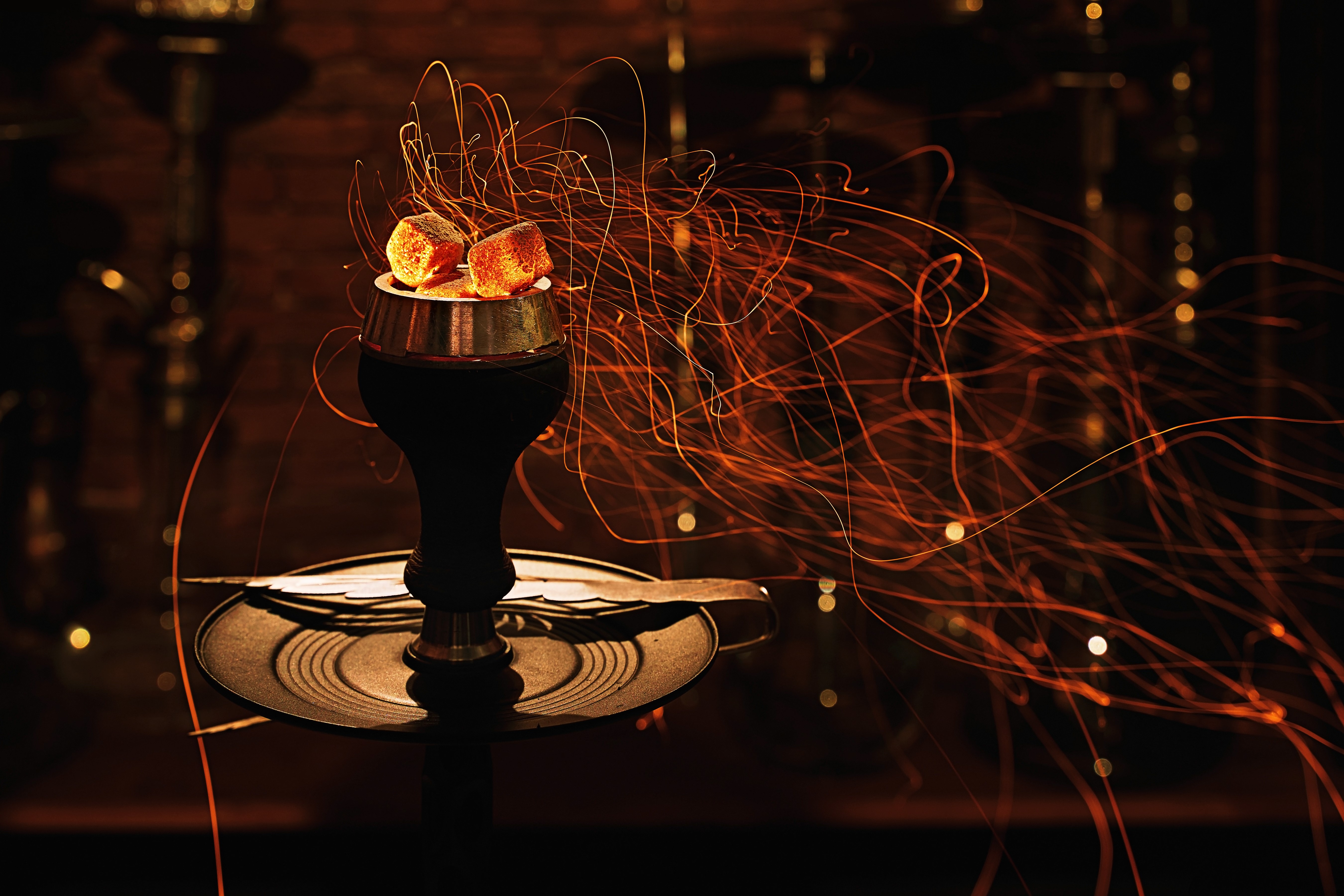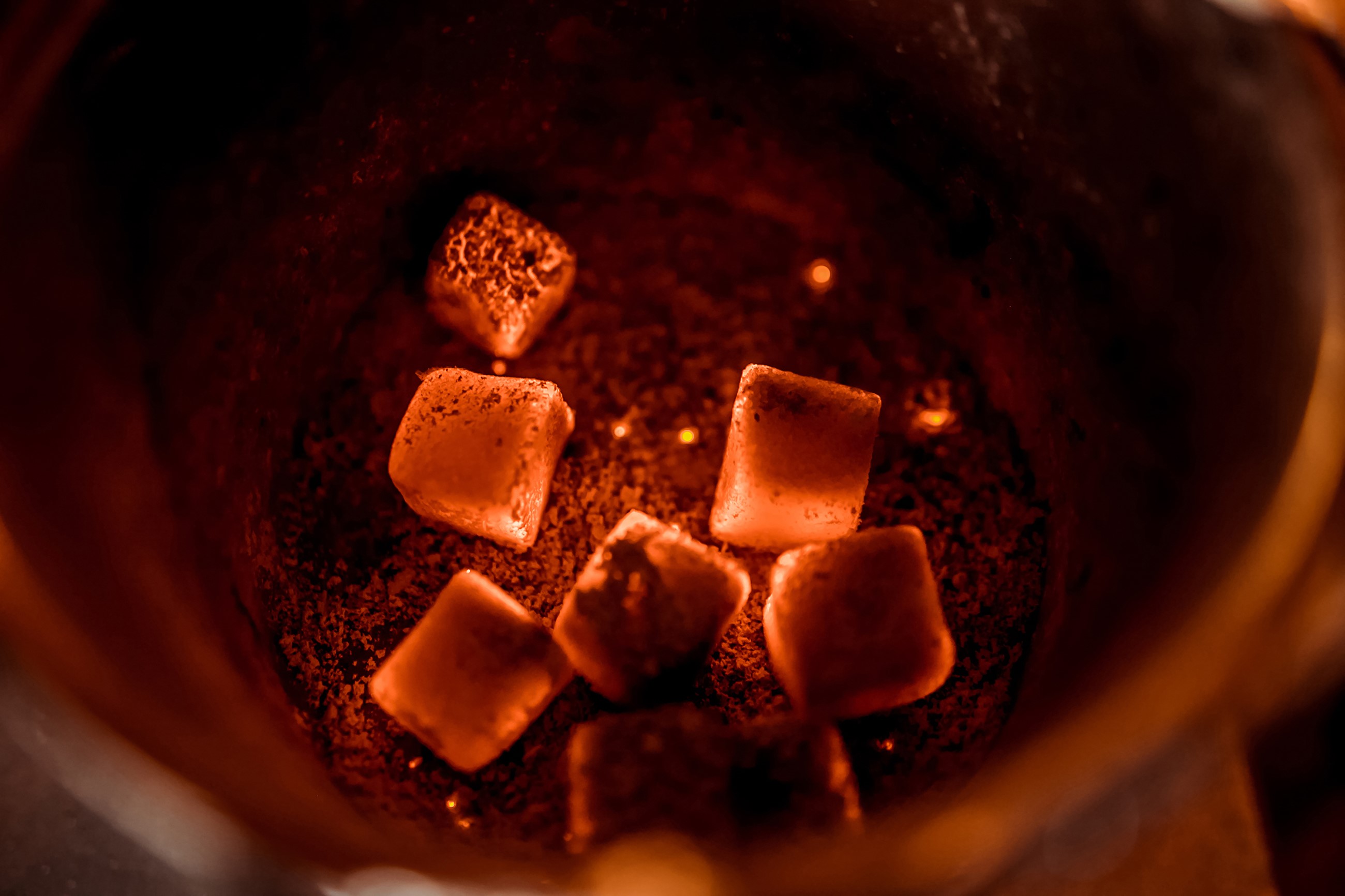The origin of the hookah is believed to be either in ancient Iran or northern India.
The original name is the Persian word shish (glass), which came into Turkish şişe (bottle) and Arabic DMG šīša (shisha). In North African dialects of Arabic, this refers to the glass body of the pipe as well as the hookah itself.
In Turkish, the pipe is called nargile (orig. Persian word nargil, coconut); derived names may be nardschila, narǧīla and ardschila, arǧīla. The Indian name huka (bowl) was adopted into English hookah.
The present form originated in the Persian Empire of the 15th/16th century. The hookah became an integral part of the culture in many Arab countries. Smoking together is still seen as a symbol of hospitality.

How it works
A hookah consists of a water bowl, boay, head (multi-hole head or Head Management Device [HMD]) and a hose.
To smoke a hookah, the bowl at the bottom of the hookah is filled with water sufficient to submerge a few centimeters of the body tube, which is sealed tightly to it. Then the tobacco head at the upper end of the body is filled with tobacco or tobacco substitutes and covered with perforated tin foil or a HMD and coal will placed on it. Due to the glowing coal, the moisture contained in the tobacco with the aromatic substances is heated and evaporated. As a result of suction through the hose, a vacuum is created in the hookah, which causes a mixture of air, steam, smoke particles and aromatic substances created through the heating of the tobacco. This also creates the typical hookah "bubbling".
Due to the long path through the body, the water, and the hose, the flavored smoke is relatively cool and much more pleasant in contrast to the smoke of the cigarette or tobacco pipe. The cooling effect can be enhanced by various techniques, e.g. by adding ice to the water bowl or additional cooling in the body or hose.
Quelle: https://de.wikipedia.org/wiki/Shisha




